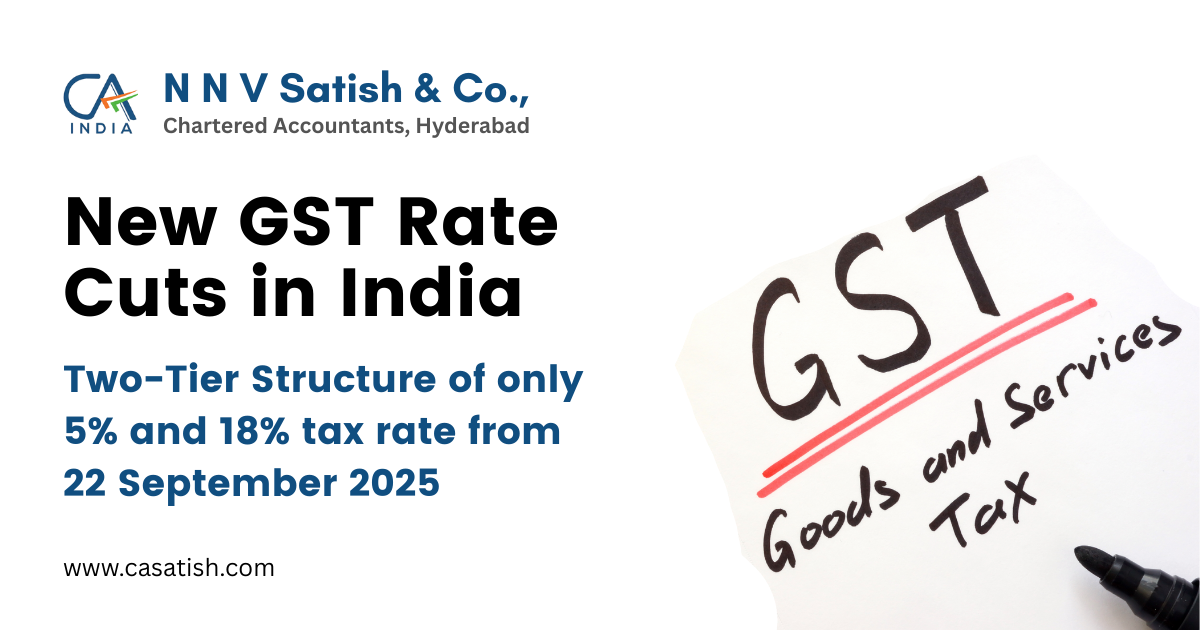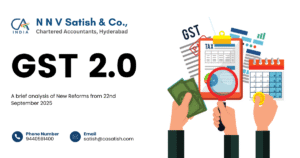India’s Goods and Services Tax (GST) system saw a significant overhaul in the 56th GST Council meeting led by Finance Minister Nirmala Sitharaman. From September 22 onward, a simplified two-tier GST rate structure has come into effect, aimed at easing the burden for both businesses and consumers.
This move, backed unanimously by all states, reflects the government’s commitment to simplifying the tax system while ensuring fair revenue collection.
Key Highlights of the New GST Structure
- Two Tax Slabs Only: GST rates are now rationalized into 5% and 18%, replacing the earlier multiple slab system.
- Effective Date: The changes come into force from 22nd September 2025.
- Objective: To reduce complexity, enhance compliance, and pass on benefits to the common man.
Why Was the Change Needed?
For years, GST was criticized for its multiple slabs (0%, 5%, 12%, 18%, 28%), which often created confusion for both taxpayers and consumers. By consolidating items into two simple slabs, the system becomes:
- Easier to follow for small businesses
- Transparent for consumers to understand the tax burden
- Efficient for administration, reducing disputes over classification
Items Under the New 5% GST Slab
The 5% GST slab covers essential goods and services to ensure affordability for the general population. These include:
- Daily-use packaged food items (bread, milk powder, cereals)
- Household essentials like soaps, detergents, and packaged salt
- Basic footwear and garments below a specific price threshold
- Transportation services such as economy class travel and public transport
- Life-saving medicines and essential healthcare items
Items Under the New 18% GST Slab
The 18% GST slab applies to non-essential and higher-value goods/services, striking a balance between revenue generation and affordability. These include:
- Consumer electronics (TVs, refrigerators, washing machines, smartphones)
- Branded garments and luxury footwear
- Packaged and processed foods beyond essentials
- Entertainment and hospitality services (restaurants, hotels, multiplexes)
- Financial and telecom services
What Does This Mean for the Common Man?
The 18% GST slab applies to non-essential and higher-value goods/services, striking a balance between revenue generation and affordability. These include:
1. Lower Expenses on Essentials: Families will save more on groceries, medicines, and household necessities.
2. Greater Transparency: With fewer slabs, it’s easier to know how much tax is being paid.
3. Boost for Businesses: SMEs and startups benefit from simplified tax filing, fewer disputes, and predictable taxation.
4. Encouragement to Consumption: Lower taxes on essentials may increase demand, fueling overall economic growth.
Impact on the Indian Economy
1. Revenue Neutrality: Despite lower slabs, rationalization ensures tax collections remain stable.
2. Compliance Improvement: Fewer categories mean less scope for tax evasion and disputes.
3. Consumer Confidence: With essentials becoming cheaper, households are expected to spend more.
The introduction of a two-tier GST system is a landmark step towards making India’s tax regime simpler, fairer, and more consumer-friendly. By consolidating items into 5% and 18% slabs, the government has not only streamlined taxation but also ensured that relief reaches the common man while supporting economic stability.
As the system takes effect from September 22, 2025, both businesses and consumers can look forward to a more transparent and predictable tax environment.




